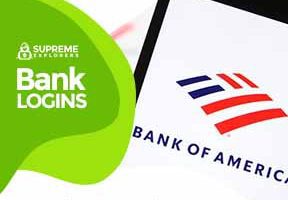Bank Logins with Balance: How Criminals are Stealing Your Money
As technology advances, so do the methods criminals use to steal money from individuals and businesses. One such method that has become increasingly prevalent in recent years is the use of bank logins with balances. In this article, we will explore what bank logins with balances are, how criminals obtain them, and what you can do to protect yourself from becoming a victim.
What are Bank Logins with Balances?
Bank logins with balances are essentially the login credentials for a bank account that has money in it. Criminals obtain these login credentials through a variety of means, such as phishing scams, malware, or by purchasing them on the dark web. Once they have the login credentials, they can access the bank account and transfer the money to another account or withdraw it in cash.
How Criminals Obtain Bank Logins with Balances
There are a variety of methods that criminals use to obtain bank logins with balances. One of the most common is through phishing scams. Phishing scams are emails or messages that are designed to look like they are from a legitimate source, such as a bank, and trick the recipient into providing their login credentials. These scams often use fear tactics, such as threatening to close the account if the login credentials are not provided.
Another way that criminals obtain bank logins with balances is through malware. Malware is malicious software that is installed on a computer or device without the user’s knowledge. Once installed, the malware can record keystrokes or take screenshots of the user’s login credentials and send them back to the criminal.
Finally, criminals can purchase bank logins with balances on the dark web. The dark web is a part of the internet that is not accessible through normal web browsers and is often used for illegal activities.
How to Protect Yourself from Bank Login Theft
There are several steps you can take to protect yourself from bank login theft:
- Keep your login credentials secure: Do not share your login credentials with anyone and do not use the same password for multiple accounts.
- Be cautious of phishing scams: Be wary of emails or messages that ask you to provide login credentials or personal information.
- Install anti-malware software: Use anti-malware software on all of your devices to prevent malware from being installed.
- Monitor your bank accounts: Check your bank accounts regularly for any unauthorized transactions.
-
Bank Logins
BANK OF AMERICA USA LOGS
$180.00 – $600.00 Select options This product has multiple variants. The options may be chosen on the product page -
Bank Logins
BOA Bank Logins USA
$200.00 – $1,300.00 Select options This product has multiple variants. The options may be chosen on the product page
What to Do If You Are a Victim of Bank Login Theft
If you believe that your bank login credentials have been compromised, you should take the following steps:
- Contact your bank: Notify your bank immediately so that they can freeze your account and investigate the unauthorized transactions.
- Change your login credentials: Change your login credentials for all of your accounts and use a strong, unique password.
- Monitor your credit report: Check your credit report regularly to ensure that no new accounts have been opened in your name.
Conclusion
Bank logins with balances are a growing problem that affects individuals and businesses alike. Criminals obtain these login credentials through a variety of means and can use them to steal money from bank accounts. By taking steps to protect yourself from bank login theft and monitoring your accounts, you can reduce your risk of becoming a victim.
-
Bank Logins
Wells Fargo Bank Logins USA
$750.00 – $2,300.00 Select options This product has multiple variants. The options may be chosen on the product page -
Bank Logins
Wells Fargo USA LOGS
$850.00 – $2,500.00 Select options This product has multiple variants. The options may be chosen on the product page
FAQs
- Can I recover my stolen funds if my bank login credentials are stolen?
It depends on the circumstances. If you notify your bank immediately, they may be able to freeze your account and recover the stolen funds. However, if the funds have already been transferred or withdrawn, it may be difficult to recover them.
- How can I tell if an email or message is a phishing scam?
Phishing scams often use fear tactics and may ask you to provide personal information or login credentials. Be wary of emails or messages that
request this type of information and always verify the source before providing any sensitive information.
- What is anti-malware software and how does it work?
Anti-malware software is a type of program that is designed to detect and remove malware from a computer or device. It works by scanning files and programs for malicious code and then removing any threats that are found.
- Can I trust websites that offer to sell bank logins with balances?
No, you should never trust websites that offer to sell bank logins with balances. These websites are often illegal and may be used by criminals to scam individuals and steal their money. It is always best to use legitimate sources to manage your bank accounts.
- What should I do if I suspect that my bank login credentials have been compromised?
If you suspect that your bank login credentials have been compromised, you should contact your bank immediately and report the incident. They will be able to freeze your account and investigate the unauthorized transactions. You should also change your login credentials for all of your accounts and monitor your credit report for any suspicious activity.














